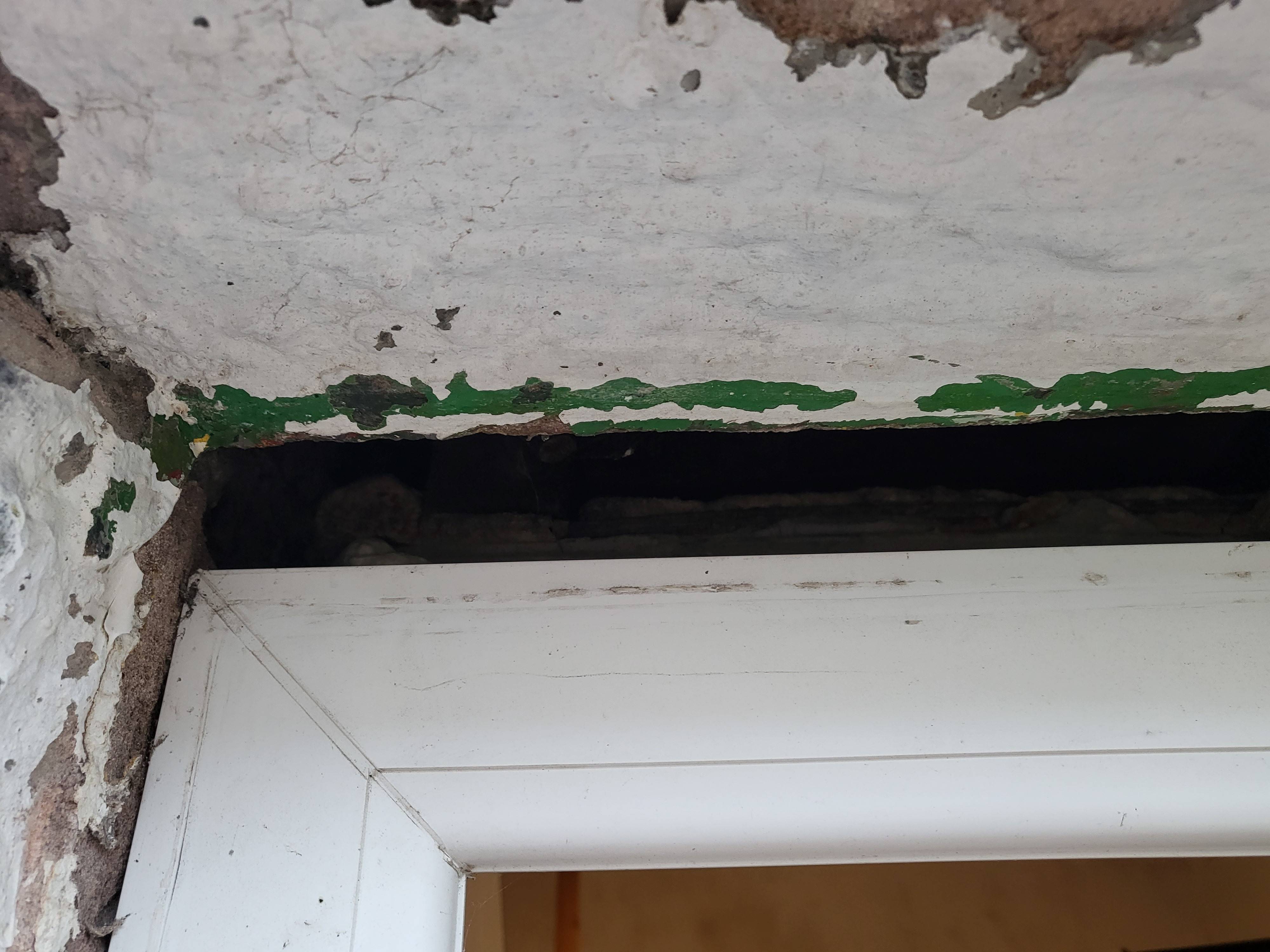We've recently had some interior work done, and the whole kitchen has been re-plastered.
A little while after the plastering was finished, cracks started forming around the back door (exterior door). The back door is quite old and we suspect it's been moving:

In an attempt to diagnose the problem we removed some very old sealant from the exterior side and uncovered the rough opening:
Which you can see is quite large in places and inconsistent.
So we're left with two problems,
- How do we stop the frame from moving further?
- How do we cover up the rough opening. I'm thinking it will need some trim attached, but how do I fix that to the sandstone wall?
Additional: I have some no nonsense expanding foam which says under applications "Assembly of door and window frames. Filling and sealing of cavities and joints". Not sure if that means it would push against the door frame or not.




